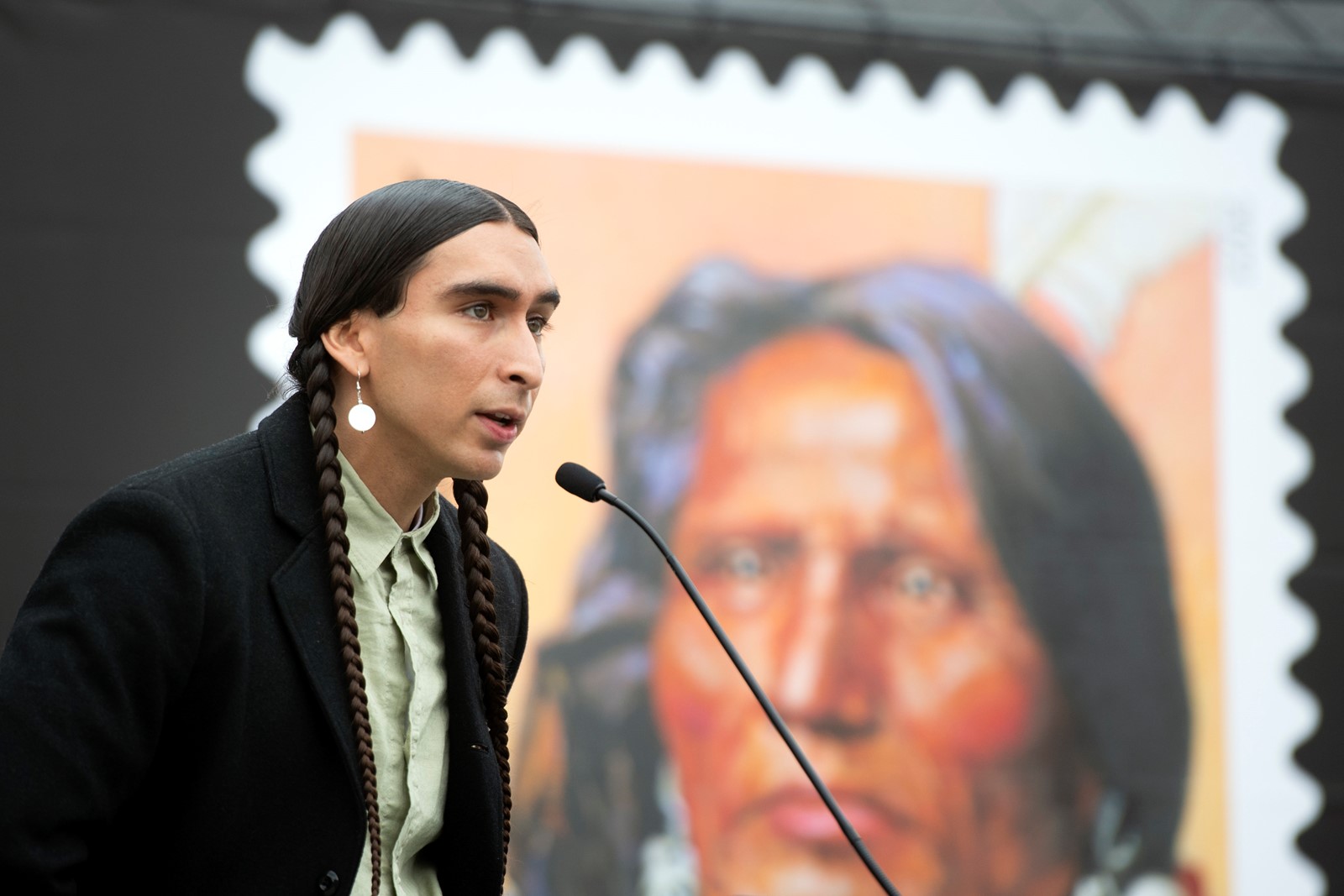
NEW YORK >> Chief Standing Bear, whose 1879 lawsuit and celebrated “I Am a Man” courtroom speech led to the recognition of Native American legal rights, was honored Friday with a Forever stamp featuring his portrait.
A leader of the small Ponca tribe in northeastern Nebraska, Chief Standing Bear successfully fought in court for Native Americans to be considered persons in the United States with the same rights to life, liberty and the pursuit of happiness as other Americans — and not as wards of the government.
The illustrated portrait of Chief Standing Bear on the stamp was based on a black-and-white photograph taken in 1877. He is depicted on the stamp wearing a bold blue shirt and a golden medallion with a background of soft orange hues faintly striated like a sunset.
In spring 1877, as wars between the United States and several Plains tribes over their lands were ending and Native Americans were being driven onto reservations, the U.S. Army forcibly removed Chief Standing Bear and about 700 Ponca members from the Niobrara River Valley in what is now northeastern Nebraska.
In the roughly 600-mile journey to what is now Oklahoma, more than 100 people died, including Chief Standing Bear’s only son.
Devastated by the loss of his child, Chief Standing Bear sought to bury his son in their homeland. In 1879, he and 29 other Ponca members traveled back to Nebraska, where they were arrested by the Army and imprisoned in Fort Omaha.
His imprisonment was the catalyst for his lawsuit, Standing Bear v. Crook, which argued for his freedom. George Crook was the general who had ordered that Chief Standing Bear and his followers be arrested. Allies of Chief Standing Bear had filed a writ of habeas corpus asking that he be released, but government prosecutors argued that under federal law, Native Americans were not “persons” and not eligible to seek a writ of habeas corpus, according to United States Courts.
After a two-day trial, Judge Elmer Scipio Dundy of the U.S. District Court in Nebraska allowed Chief Standing Bear to speak.
The chief slowly rose from his seat, held out his hand and said through an interpreter: “My hand is not the color of yours, but if I pierce it, I shall feel pain. If you pierce your hand, you also feel pain. The blood that will flow from mine will be the same color as yours. The same god made us both.”
He concluded his speech with four striking words: “I am a man.”


 PREVIOUS ARTICLE
PREVIOUS ARTICLE
